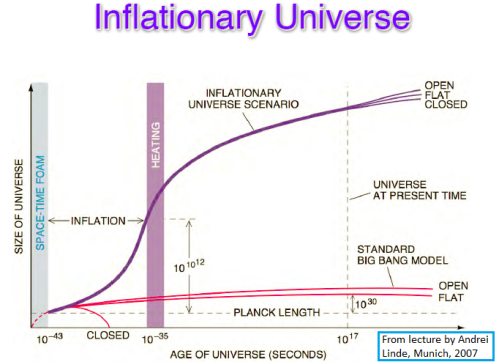There has been a lot of confusion about this, with clip quotes from one or another of the paper's authors being traded to "prove" that the theorem does, or doesn't, prove the universe had a beginning. So let's look at what the theorem actually says.
"Any theorem is only as good as its assumptions," writes Alexander Vilenkin in a letter to Lawrence Krauss. So let's start with the assumptions of the theorem. Roughly speaking, there are two:
- Spacetime is classical.
- Spacetime is expanding on average.
Now let's jump to the conclusion, which I quote from their paper:
... we see that if Hav > 0 along any null or noncomovingSome translation: a "timelike geodesic" is simply the path that an object will travel on if it is not subject to any forces other than gravity. Similarly, a "null geodesic" is the path that a light ray will travel. "Hav > 0" is the mathematical statement of assumption (2.): the universe is expanding on average. "Past-incomplete" means that if you try to follow one of these paths backwards in time, you can only do so for a finite amount of time.*
timelike geodesic, then the geodesic is necessarily
past-incomplete.
OK, so here's my first point: the BGV theorem is not a singularity theorem!
The conclusion says nothing at all about singularities: it only says that certain paths cannot be extended infinitely backward in time. One way that this might happen is if the path encounters a singularity. But that is not the only way it can happen.
The other thing that can happen is that, as we trace the path backward in time, we encounter a region where one (or both) of the assumptions of the theorem is no longer valid.
Start with assumption (2.). The path can enter a region in which spacetime is static, or contracting, or cyclically expanding and contracting. Then assumption (2.) is violated and the theorem's conclusion is avoided. In spacetimes like these, the BGV theorem simply doesn't apply.
What about assumption (1.)? Classical spacetime is a pretty basic assumption in any sort of cosmology. But it is expected to break down in the quantum gravity regime, where we encounter "spacetime foam" of some sort. This is difficult to discuss, since in the absence of a good theory of quantum gravity, no one has any idea what spacetime foam should look like. But it's possible that the BGV theorem is pointing us to a place where quantum gravity comes into play.
So the BGV theorem does have something very interesting to tell us about the early universe: namely, that the infinitely old, infinitely expanding inflationary period that I discussed in the previous post cannot be the end of the story. Not just because of vague speculations about the Planck epoch, but because of the properties of classical spacetime itself. Here's what the authors said in the paper itself:
Whatever the possibilities for the boundary [where the geodesics come to an end - RNO], it is clear that unless the averaged expansion condition can somehow be avoided for all past-directed geodesics, inflation alone is not sufficient to provide a complete description of the Universe, and some new physics is necessary in order to determine the correct conditions at the boundary. This is the chief result of our paper.
But the BGV theorem does not say that spacetime must be singular; still less does it say that there was an initial singularity from which the entire universe arose. This is why I say that the theorem is irrelevant to the Kalam Cosmological Argument: it doesn't say anything about whether the universe had a beginning or not.
* A few more technical points: by "backward in time" I mean in the opposite time direction from the direction in which the universe is expanding. And by "finite amount of time" I mean time as measured by a clock carried along with the moving object (proper time). In the case of null (light) rays, we have to use an "affine parameter" rather than the proper time.



